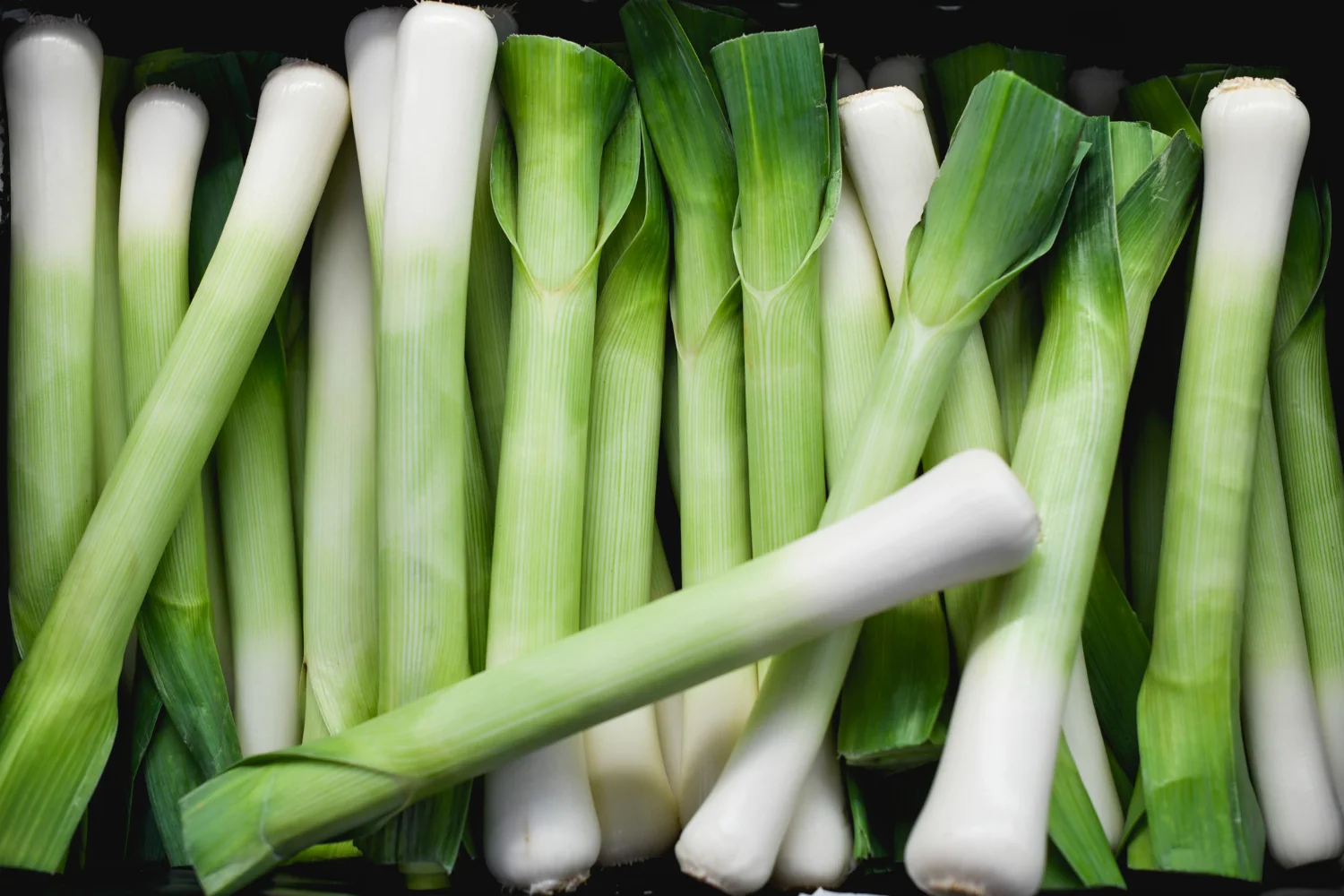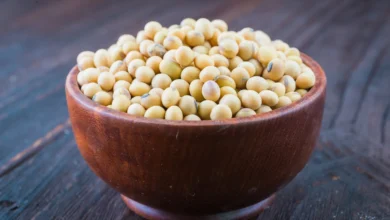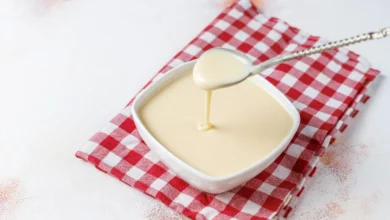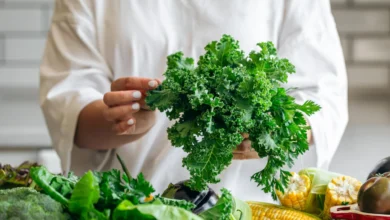Can You Freeze Leeks? Yes… and Here is How To
Leeks, a member of the allium family alongside onions and garlic, are a great source of vitamin A, C & K, read here health benefits of Leeks. Picture this: a crisp autumn evening, the aroma of caramelized leeks wafting through your kitchen as you prepare a creamy potato leek soup for your sweetheart. You’ve harvested a bounty of these flavorful gems, but how to ensure they don’t go to waste? That’s precisely the predicament I found myself in last fall, leading me to discover the simple magic of freezing leeks.
Contents
- Can You Freeze Leeks
- How to Store Fresh Leeks
- Freezing Leeks for Soup
- How to Freeze Leeks
- How to Defrost Frozen Leeks
- Defrosting Leeks Quickly
- How Long Can You Freeze Leeks
- Can You Freeze Leeks Whole?
- Eating the Whole Food
- Be Fabulous with Leftovers
- Buying Tips
- Goodness in Food
- Leeks: Nutritional Powerhouses
- Do I Have to Blanch Leeks for Freezing?
- How to Blanch Leeks for Freezing
- More Freezing Finesse: Advanced Tips for Leek Preservation
- Savoring Leeks Seasonally
- Freezing and Storing Alliums: A Comparison
- Leeks Top Tips
- Can I Freeze Leeks Cooked in Butter?
- Frequently Asked Questions
Can You Freeze Leeks
The short answer is YES.
Known for their mild onion flavor, they are a versatile vegetable that can be used in various dishes, from soups and stews to quiches and frittatas. However, as a seasonal vegetable primarily available from August to April, you might find yourself with leftovers or a bountiful harvest. This leads us to the question: Can you freeze leeks to enjoy their nutrients year-round? The answer is a resounding yes.


How to Store Fresh Leeks
To keep your leeks fresh, store them in the fridge. Trim the root ends and any wilted leaves, but leave the green tops intact. Wrap the leeks loosely in a damp paper towel or place them in a perforated plastic bag to maintain moisture. They should stay fresh for up to two weeks in the fridge.
Freezing Leeks for Soup
Freezing leeks specifically for soups and stews is even easier than the general freezing method. Follow these steps:
- Clean and chop: Thoroughly wash the leeks and chop them into the size you typically use in your soups. This could be thin slices, half-moons, or even diced pieces.
- Optional Blanching: If you prefer a softer texture in your soups, you can blanch the chopped leeks for about 30 seconds in boiling water. Then, immediately plunge them into ice water to stop the cooking process. This step is optional and depends on your preference.
- Portion and Freeze: Divide the chopped leeks into portions that suit your typical soup recipes. Place each portion in a freezer-safe bag or container, removing as much air as possible before sealing. Label and date the containers for easy identification.
- Cook Directly from Frozen: When you’re ready to make soup, simply add the frozen leeks directly to the pot. They will thaw quickly as the soup cooks.
How to Freeze Leeks
Freezing leeks is a simple process that allows you to enjoy their flavor and nutrients long after their season ends. First, clean and slice the leeks into your desired size, whether it’s thin rounds or half-moons. Next, spread them out on a baking sheet lined with parchment paper, ensuring they aren’t touching to prevent them from sticking together. Place the tray in the freezer and let the leeks freeze solid. Once frozen, transfer the leeks to a sealed container or freezer bag. Be sure to label and date the container so you can keep track of their freshness. Frozen leeks can be stored for up to three months.
READ: Can You Freeze Risotto
How to Defrost Frozen Leeks
Defrosting frozen leeks is easy and convenient. If you plan to use them in a cooked dish like soup or stew, you can add them directly to the pot from frozen. The heat from cooking will quickly thaw them. However, if you need to use the leeks for a recipe that requires them to be thawed, you can do so in the fridge overnight. Place the frozen leeks in a bowl or container and let them thaw slowly in the refrigerator for 24 hours.
Defrosting Leeks Quickly
If you’re short on time, you can also defrost leeks in the microwave. Place the frozen leeks in a microwave-safe dish and use the defrost setting. Be sure to check them frequently and stir to ensure even thawing. Once thawed, pat them dry with a paper towel before using them in your recipe.
How Long Can You Freeze Leeks
The shelf life of frozen leeks depends on whether they were blanched before freezing. If you blanched the leeks, they can last in a ziplock freezer bag or container for up to 10 months. However, if you froze them without blanching, they will only keep for up to 2 months.
READ: Can You Freeze Pepperoni
Can You Freeze Leeks Whole?
While you can skip the steps of cutting and washing to freeze leeks whole, it’s easiest to cut and freeze them. This way, you can add them straight to recipes from the freezer. If you freeze leeks whole, you have to thaw them in the refrigerator before you can cut them up and use them in dishes.
How to Freeze Whole Leeks
If you want to freeze whole leeks, follow these steps:
- Trim the root end and the dark green parts of the leeks.
- Wash the white and light green parts thoroughly under running water.
- Place the leeks in a bowl of cold water and gently pull back the layers to remove any dirt.
- Pat the leeks dry with a paper towel.
- Spread the leeks out on a baking sheet lined with parchment paper and place them in the freezer until they are frozen solid.
- Transfer the frozen leeks to labeled freezer bags or containers.
Eating the Whole Food
While most recipes call for the white and light green parts of the leek, the green ends are also edible. They have a stronger, more pungent flavor compared to the milder base. If you choose to use the green ends, wash them thoroughly to remove any dirt or grit that may be trapped between the layers. They can be chopped and added to stocks, soups, or stews for an extra depth of flavor.
Be Fabulous with Leftovers
Leftover fresh leeks
Don’t let those leftover fresh leeks go to waste! They can be a fantastic addition to a variety of dishes. Chop them up and add them to your favorite vegetable soup for a deeper flavor, or sauté them and mix them into a creamy cheese sauce for pasta.
Leftover cooked leeks
Leftover cooked leeks are incredibly versatile as well. Mash them and use them as a topping for shepherd’s pie or cottage pie, or incorporate them into omelets or frittatas for a flavorful breakfast or brunch.
Buying Tips
When buying leeks, opt for loose leeks rather than pre-packaged ones. This way, you can choose the freshest and firmest leeks, and only buy the amount you need. Consider swapping some of your fresh chopped vegetables for frozen ones to reduce food waste and save money. Frozen leeks are a cheaper option and allow you to use only the portions you need, reducing the risk of leftovers. Use a portion calculator to determine how much to serve at mealtimes, ensuring you only cook what you’ll eat.
Goodness in Food
The food we eat comes in all shapes, colors, and prices, but it plays an important role in keeping us healthy and giving us energy. Leeks, with their long white stalks and fan-like green leaves, are not only delicious but also packed with nutrients. They are a good source of vitamin A, which is essential for good vision, especially in dim light. Leeks also contain high levels of flavonoids, compounds that act as antioxidants and may help protect our bodies from diseases. Additionally, leeks are rich in minerals like calcium, which is important for strong bones and teeth.
Leeks: Nutritional Powerhouses
| Nutrient | Amount per 100g (cooked) | Benefits |
| Vitamin K1 | 29.3 mcg | Essential for blood clotting and bone health |
| Vitamin A | 415 IU | Important for vision, immune function, and cell growth |
| Folate | 25 mcg | Crucial for cell division and DNA synthesis |
| Manganese | 0.247 mg | Helps with bone development, metabolism, and blood sugar regulation |
| Vitamin C | 4.2 mg | Powerful antioxidant, supports immune function and collagen production |
| Fiber | 1.8 g | Promotes digestive health and helps regulate blood sugar levels |
Do I Have to Blanch Leeks for Freezing?
Blanching leeks before freezing isn’t mandatory, but it’s a game-changer if you want to preserve them for an extended period. If you plan to use your frozen leeks within a month or two, skipping the blanching step is perfectly fine. Simply slice, wash, and thoroughly dry the leeks before placing them in a dated freezer bag. However, if you’re aiming for long-term storage (beyond two months), blanching becomes essential. It helps deactivate enzymes that can lead to flavor and texture deterioration over time, ensuring your leeks emerge from the freezer as fresh and vibrant as the day you froze them.
READ: Can You Freeze Brownies
How to Blanch Leeks for Freezing
- Prep the Leeks: Wash and trim the leeks, removing the tough dark green parts and root ends. Slice them into rounds or half-moons, depending on your preference.
- Boil Water: Bring a large pot of water to a rolling boil.
- Blanch: Add the leeks to the boiling water and cook for 1-2 minutes, depending on the thickness of the slices.
- Ice Bath: Immediately transfer the leeks to a bowl of ice water to stop the cooking process. This helps preserve their color, texture, and nutrients.
- Drain and Dry: After a few minutes in the ice bath, drain the leeks thoroughly and pat them dry with a paper towel.
- Freeze: Spread the leeks in a single layer on a baking sheet lined with parchment paper and freeze until solid. Once frozen, transfer them to a labeled freezer bag or airtight container.
More Freezing Finesse: Advanced Tips for Leek Preservation
Beyond the basic freezing methods, there are additional techniques you can employ to elevate your leek preservation game:
- Vacuum Sealing: Invest in a vacuum sealer to remove all air from the freezer bags or containers. This method minimizes freezer burn and extends the shelf life of your frozen leeks significantly.
- Freezing Pureed Leeks: If you often use leeks in sauces, soups, or risottos, consider pureeing them before freezing. This saves time during cooking and provides a convenient way to incorporate leek flavor into your dishes. Simply cook and puree the leeks, then freeze them in ice cube trays or small containers.
- Blanching Variations: Experiment with different blanching times to achieve the desired texture in your frozen leeks. A shorter blanch (30 seconds) will result in crisper leeks, while a longer blanch (2 minutes) will yield softer ones.
- Double Bagging: For extra protection against freezer burn, consider placing your frozen leeks in a second freezer bag. This creates an additional barrier against air and moisture, ensuring optimal freshness.
Savoring Leeks Seasonally
Leeks are a cool-weather crop, thriving in the crisp temperatures of fall and winter. Their peak season typically runs from late summer through early spring, making these months the ideal time to find the freshest and most flavorful leeks at your local market. If you’re looking to stock up for the off-season, freezing is a great way to preserve their goodness. Aim to freeze leeks during their peak season when they are at their prime, ensuring the best quality and flavor in your frozen stash. This way, you can savor the taste of leeks even when they are not readily available fresh.
Freezing and Storing Alliums: A Comparison
| Allium | Freezing Method | Storage (Fresh) | Storage (Frozen) | Notes |
| Leeks | Blanch and freeze sliced | Fridge (up to 2 weeks) | Freezer (up to 10 months) | Blanching recommended for long-term storage |
| Onions | Freeze chopped or sliced | Cool, dry place (months) | Freezer (up to 12 months) | No blanching needed |
| Garlic | Freeze whole cloves | Cool, dry place (weeks) | Not recommended | Flavor and texture change significantly |
| Shallots | Freeze chopped or sliced | Cool, dry place (weeks) | Freezer (up to 12 months) | No blanching needed |
Leeks Top Tips
- Look for firm leeks with dark green tops and white bottoms. Avoid those with yellowing or wilting leaves.
- When cleaning leeks, slice them lengthwise and rinse thoroughly under running water to remove any dirt or grit hidden between the layers.
- Leeks can be used interchangeably with onions in most recipes.
- For a milder flavor, use only the white and light green parts of the leek.
- Frozen leeks are perfect for adding to soups, stews, or stir-fries.
- To reheat cooked leeks, gently warm them in a pan with a little butter or oil.
Can I Freeze Leeks Cooked in Butter?
Yes, you can freeze leeks cooked in butter, but it’s important to note that the texture might change slightly upon thawing. The butter can separate and the leeks may become softer. If you plan to freeze cooked leeks, it’s best to do so in a sauce or as part of a larger dish, like soup or stew.
Conclusion
From preserving their peak-season freshness to incorporating them into hearty meals year-round, freezing leeks is a simple yet rewarding endeavor. Whether you’re a seasoned home cook or a culinary novice, this versatile allium deserves a spot in your freezer. So, the next time you find yourself with a surplus of leeks, don’t let them go to waste. Embrace the art of freezing and unlock a world of flavor possibilities, ensuring that the taste of spring lingers on your plate even in the depths of winter.
______________________________
Frequently Asked Questions
What’s the best way to freeze leeks?
The best way to freeze leeks is by cutting them into slices, spreading them on a sheet of parchment paper on a cookie sheet, and freezing them solid. Once frozen, the small clumps can be combined in a freezer-safe container and enjoyed at any time.
Do leeks need to be blanched before freezing?
When preserving vegetables, blanching can improve the safety and quality of the final product. Most vegetables should be blanched before freezing, drying, or dehydrating. However, there are exceptions, and diced or cut onions, green onions, leeks, and peppers do not need to be blanched before preserving.
What is the best way to store leeks?
Place unwashed, untrimmed leeks in a Glad® Food Storage Zipper Bag. Close the bag loosely without sealing it, and place it in the crisper drawer of your refrigerator.
Can leeks be cooked from frozen?
Yes, leeks can be cooked from frozen. For the best results, simply boil the frozen leeks in a saucepan of boiling water according to your recipe instructions.
Should I wash leeks before freezing them?
Yes, it’s important to wash leeks thoroughly before freezing them to remove any dirt or grit that may be trapped between the layers. You can slice them first and then rinse them under cold running water, or soak them in a bowl of cold water to loosen any debris.
Can I freeze leeks with other vegetables?
Absolutely! Leeks can be frozen with other vegetables like carrots, celery, or onions to create a ready-to-use mirepoix or soup base. Simply chop all the vegetables, blanch them if desired, and freeze them together in a labeled freezer bag or container.
Can you refreeze leeks after thawing them?
It’s not recommended to refreeze leeks after they have been thawed. Refrozen vegetables can lose their texture and flavor, and there’s also a risk of bacterial growth. It’s best to thaw only the amount of leeks you need for your recipe.





